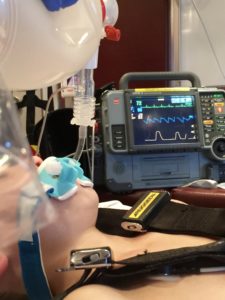Pediatric Cardiac Arrest: What we get wrong. How we can do better
There are few emergency calls that evoke the emotion of a child in cardiac arrest. As caregivers we know we have a responsibility to give this patient the best possible chance for resuscitation. Do we rush to the hospital or resuscitate early on scene? Do we prioritize airway or epinephrine administration? Do we focus on ventilation or does too much ventilation decrease circulation? New, practical, EMS-focused research is helping us make better decisions on-scene to help our littlest, most critical patients. This program evaluates the latest information and focuses on helping ALS and BLS providers leave bad habits behind, and focus on what we now know we can do better to make a real difference in pediatric cardiac arrest.
Teaching Formats:
-Lecture
-Discussion
-Case Studies
-Question and Answer
Learning Objectives: Students will be able to:
- Cognitive: Describe the key emergency care priorities for management of pediatric cardiac arrest.
- Cognitive: Identify priority medications in pediatric cardiac arrest.
- Psychomotor: Demonstrate how to calculate pediatric medication doses for cardiac arrest.
- Affective: Explain the advantage of resuscitating on scene in terms of rapid establishment of airway, breathing, circulation, and priority medication administration.









